What makes Eastern Adriatic/Herzegovina region-grown, Lavender herb/essential oil profoundly special?
During the domestic research work on the realization of the project of introduction of Immortelle seedlings into the organic production, it was shown that the area of the town Ljubinje, i.e. Herzegovina region, has better climatic and pedological (soil) conditions for growing not just Immortelle, but numerous other herbal, and plant species, as well, which results in their prominent therapeutic/healing characteristics, than Europe’s/French well-known regions of Provence, and Corsica.
The “exclusivity” of the two lastly mentioned French regions, in this context, is nothing more than a decades-long/well-financed, branded myth.
Herzegovina region, a worldwide heritage of more than 700 medicinal herbs and plants, many of which are endemic, specific/unique climatic, and soil characteristics, represents the mix of a warm Mediterranean, and cold Alpine mountains atmospheric conditions, followed by the rocky soil, rich in limestone.
It is exactly these, upper stated, Nature itself-given aspects, that are resulting in the inimitable chemotype structure of Lavender, and other essential oils, made from the herbs and plants, collected within the Herzegovina region borders.
Pay close attention to what you are purchasing, and using, that markets as a “essential oil”, futhermore, and esspecially, as a “therapeutic-grade”, “food-grade”, “pure”, “local”, and similar!
It is not uncommon, and not a big secret, as a matter of fact, that many essential oil manufacturers, and retailers, are using shady/dishonest practices while distiling, and/or distributing their products.
These include, among other:
- Completion of the distilation process within the period of time that is too short, and using temperatures/pressure that are/is too high/strong, at the same time, in order for the essential oil extraction process to pass properly/smoothly, and to result in a final extract/essence that possesses all of the therapeutic/healing components of the herbal/plant raw material, in a concentrated form (this is a common, shady practice, with the industrially-made products)
- Diluting the concentrate (essential oil/s), with natural and/or synthetic matter (for example, with using the following: Almond oil, fragrance chemicals, etc.)
- Diluting the concentrate (essential oil/s), with other essential oil/s, which possess similar aroma, and are, usually, incomparably cheaper than the original concentrate being diluted; (classical example here is Melissa essential oil – it is often times diluted with citrus essential oils, whose smell resembles Lemon balm)
- Subterfuge of synthetic/fragrance substances, marketed as “natural” “essential oils”
- Deception regarding the location where the essential oil was distilled (for example, the Lemon/Orange/Melissa essential oils, marketed as “Mediterranean”, are, actually, made in India, China, etc.)
- Increasing the amount of certain beneficial/valued compounds within the essential oils, explained within the following example/s – the levels of neryl acetate, a valued/healing compound within the Helichrusym Italicum, is being increased by some distributors, through citrus fruits derived one, and/or it’s levels are being increased by mixing the two, different manufacturers produced, Helichrysum essential oils (one possessing lower levels of neryl acetate, and the other one higher levels of this compound).
Eastern Adriatic Lavandula Officinalis Healing Essential Oil
Lavender is an aromatic plant from the Lamiaceae family that is used in holistic medicine, natural cosmetics, and food preparations. The use of lavender dates back to ancient times. The collection of wild lavender is noted in Mesopotamia, with the first cultivation attempt being made in Arabia.
The ancient Egyptians used it in their known mummification procedures. From the time of ancient Greece and the Roman era, to the present day, evidence can be found that it was used in holistic medicine, both for the prevention, and treatment of numerous health concerns. The ancient Greeks used it as a laxative, as well as for respiratory imbalances, while the Romans used it for treating of stomach and kidney disorders, when dressing wounds and insect bites.
For centuries, lavender has been used as a sedative, calming, antidepressant, rejuvenating remedy, a means of disinfecting and refreshing spaces, from closets and apartments, to hospital rooms.
The herb Lavender got its name from the Latin word “lavare” (meaning: “to wash”), due to the custom that Romans practiced: using Lavender flowers to scent baths and bathing water.
Health Benefits, Uses:
- Powerful antioxidant protection – increases the activity of the body’s most powerful antioxidants — glutathione, catalase and superoxide dismutase (SOD)
- Aids in naturally treating of diabetes
- Has a balancing effect on the nervous system: relieves stress, anxiety, tension, helps with exhaustion, depression, hysteria, melancholy
- Helps to cope with panic attacks. Effective for aggression, irritability, fear, hyperactivity in children
- Circulatory system: Helps to equalize the pulse, eliminate tachycardia, and neurotic heart pain. It is a mild antispasmodic. Reduces blood pressure. Cleanses the aorta from atherogenic plaque, has a pronounced anti-inflammatory activity, which is manifested in the normalization of the blood count
- Digestive system: Reduces appetite. Regulates the release of sugar into the blood by the liver. Helps with nausea, vomiting. Aids in normalizing the liver function
- The immune system: Strengthens the body’s resistance to overwork and infectious diseases. Provides an immunoprotective effect. Has a radioprotective property
- Respiratory system: It is used to treat colds and flu, laryngitis, bronchitis, and other imbalances of the respiratory system. Effective for asthma and other breathing concerns, caused by anxiety
- Reproductive system: Relieves premenstrual tension and menstrual cramps. Used during childbirth to relieve anxiety and reduce pain. It has a diuretic and anti-inflammatory effect in cystitis, urethritis. Hygienic remedy for vaginitis, thrush
- Musculoskeletal system: Reduces muscle pain, including those caused by increased physical activity. Used for rheumatism, arthritis, sciatica, bruises and sprains
- Nervous system: Helps with insomnia, especially the one caused by stress and anxiety. Aids in relieving the headaches and migraines. Increases the possibility of adaptive reactions
- Body detoxification: Lavender is able to form complexes with lead cations, and remove them from the body afterwards; under conditions of intoxication with heavy metal salts for several days, it has a positive effect on the function of the central nervous system, liver, myocardium, blood, and on the morphology of internal organs
- Skin benefits; Has a refreshing, renewing, regenerating effect. Eliminates redness, irritation, swelling, itching, peeling. Mixed with St. John’s wort base oil, it restores the texture of a dry skin, stimulates the growth of new cells, and promotes the healing of cracks in dry skin. Lavender essential oil cleanses, stimulates and detoxifies the skin. It has excellent antiseptic effects, reduces inflammation. Burns (domestic, solar), prevents infections, accelerates healing. Effective for any inflammatory processes (acne, dermatitis, eczema, psoriasis, boils). Helps with vitiligo, fungal skin lesions, gangrene, effective in the treatment of purulent wounds, abscesses, ulcers, skin rashes with chicken pox. Used as a repellant, and to relieve itching after insect bites. Aids in relieving of rosacea
- Exceptional remedy for the care of damaged hair: eliminates dandruff, brittleness, and excessive hair loss. Stimulates hair growth
Botanical Name: Lavandula Officinalis
Extraction Method: Steam distilled
Part of Plant Distilled: Flowers
Country of Origin: Bosnia and Herzegovina
Composition: 100% Lavandula Officinalis (angustifolia)
Consistency: Thin viscosity
Cultivation Method: Organic
Scent Description: Floral fresh, with a subtle sweet, soft herbaceous undertone
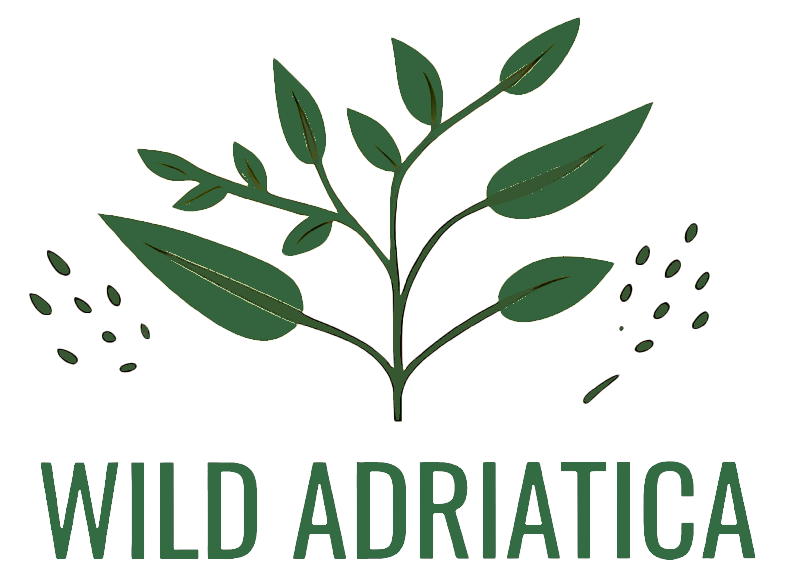
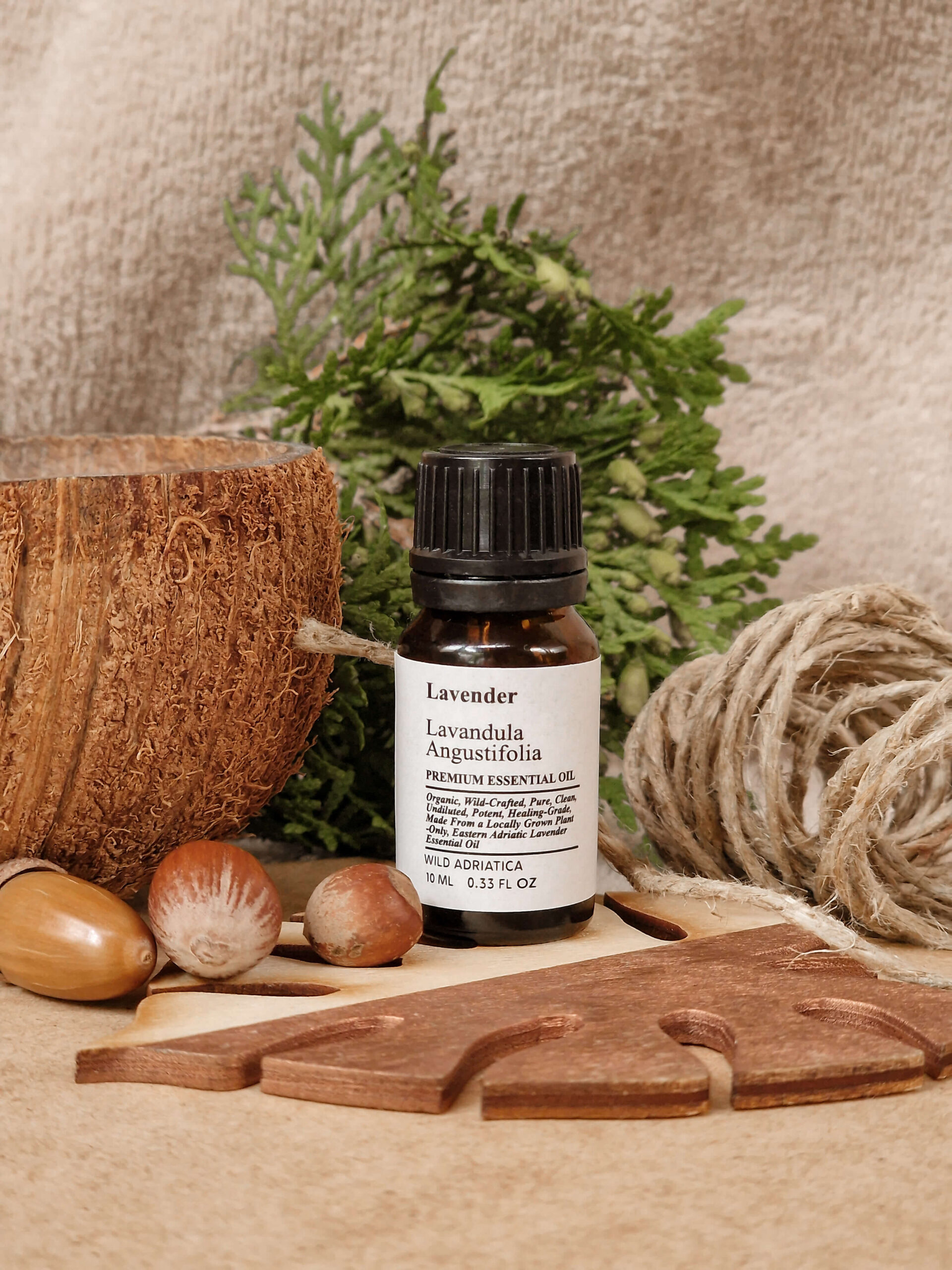
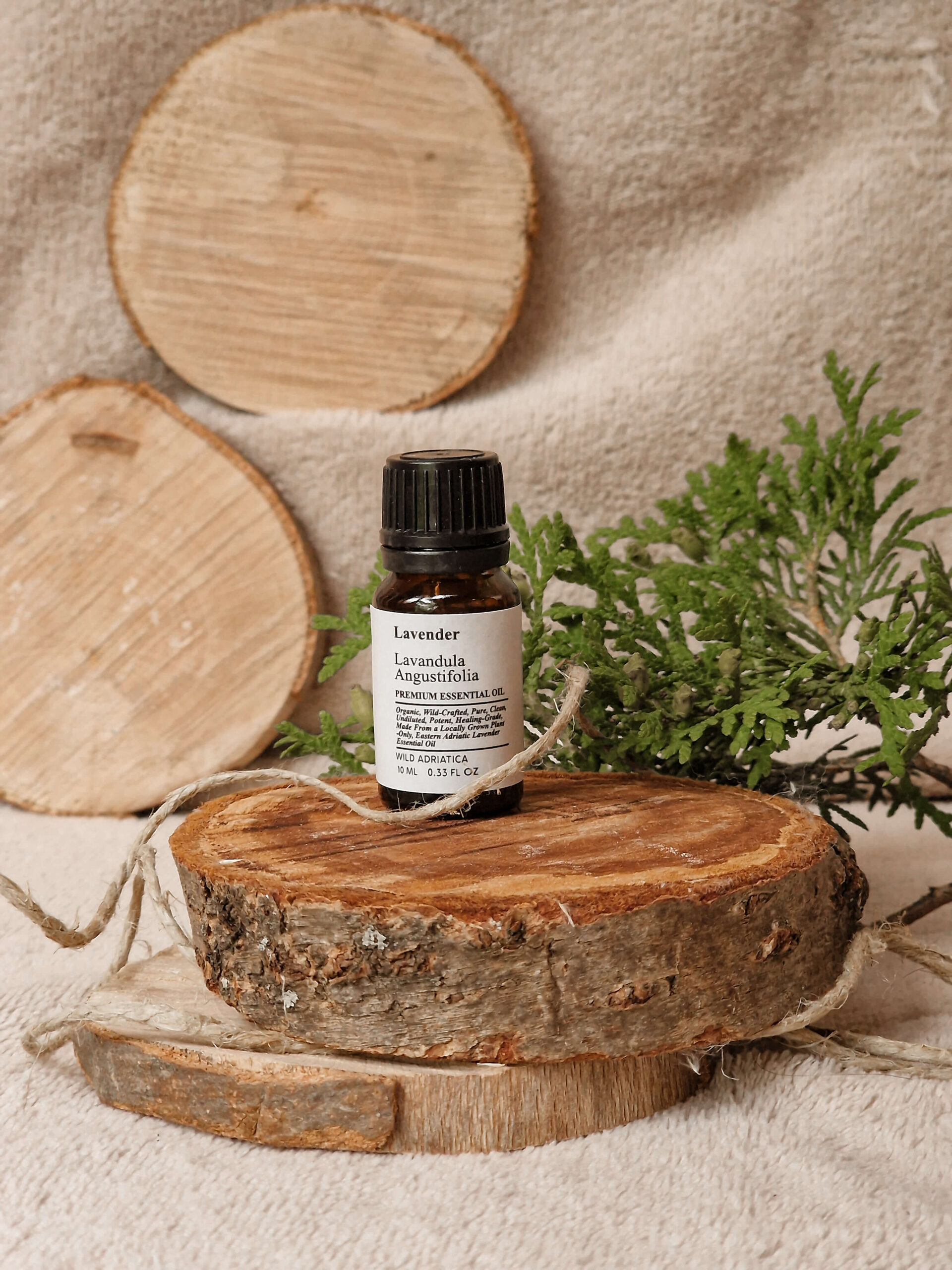
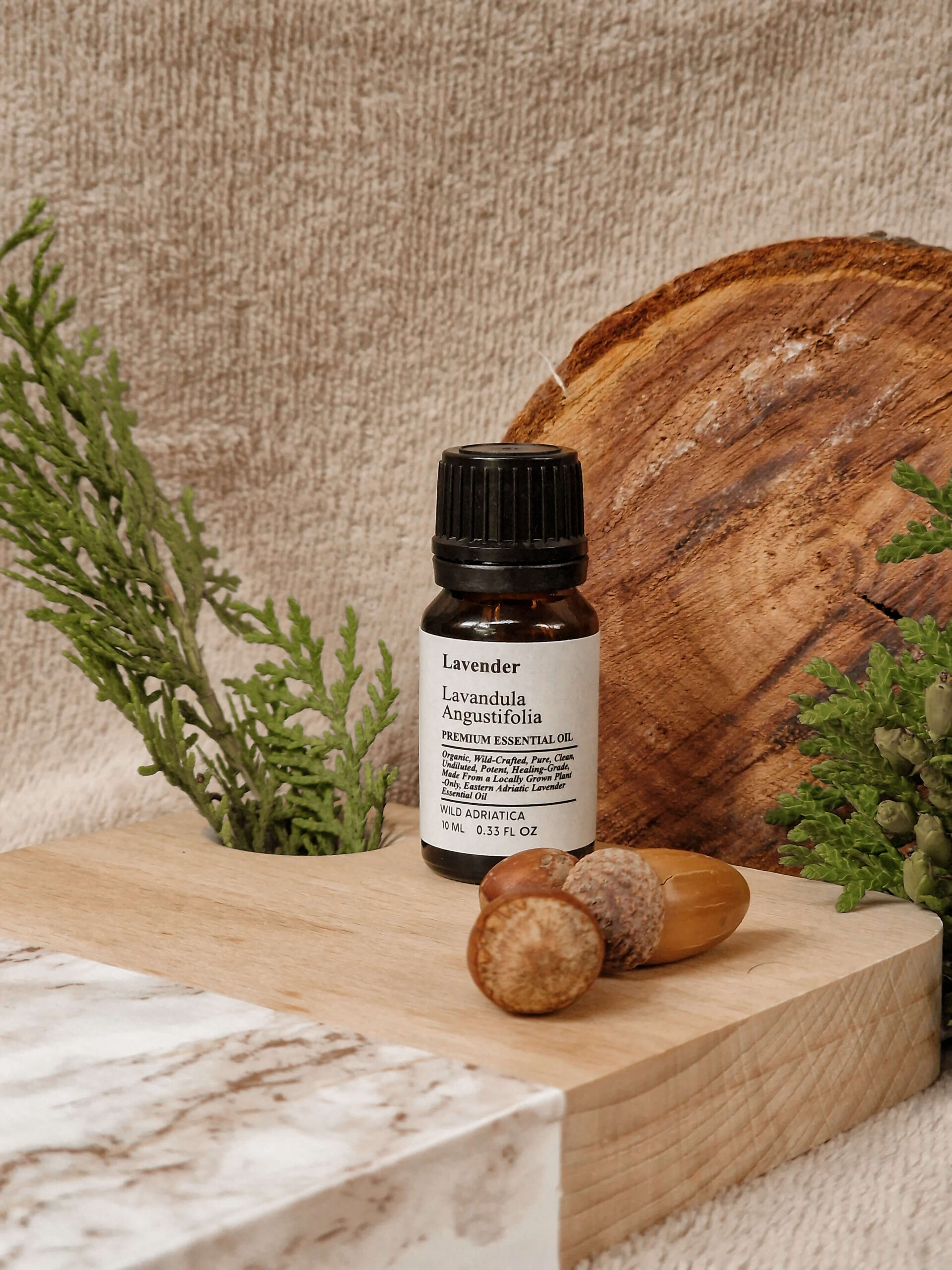
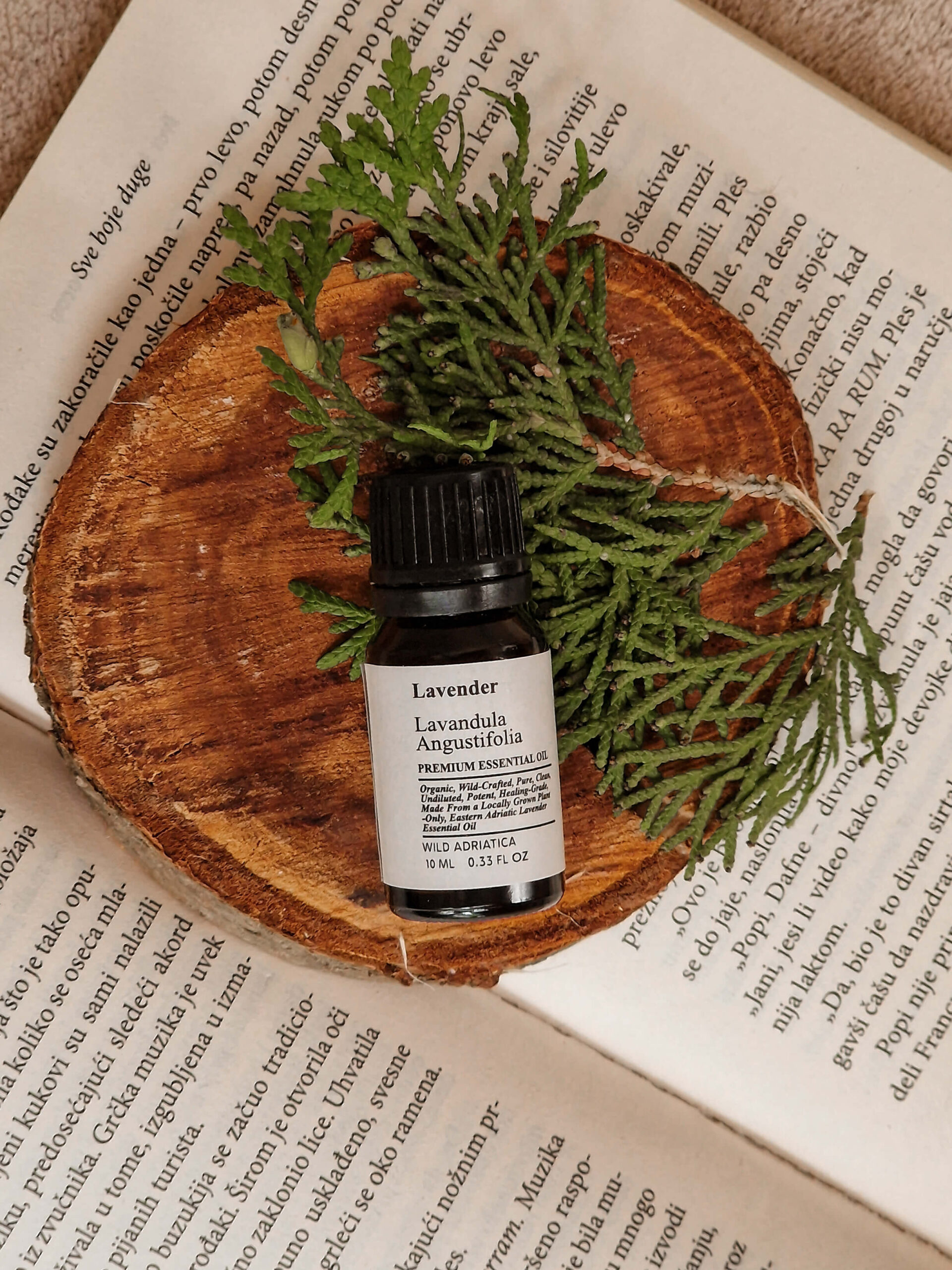
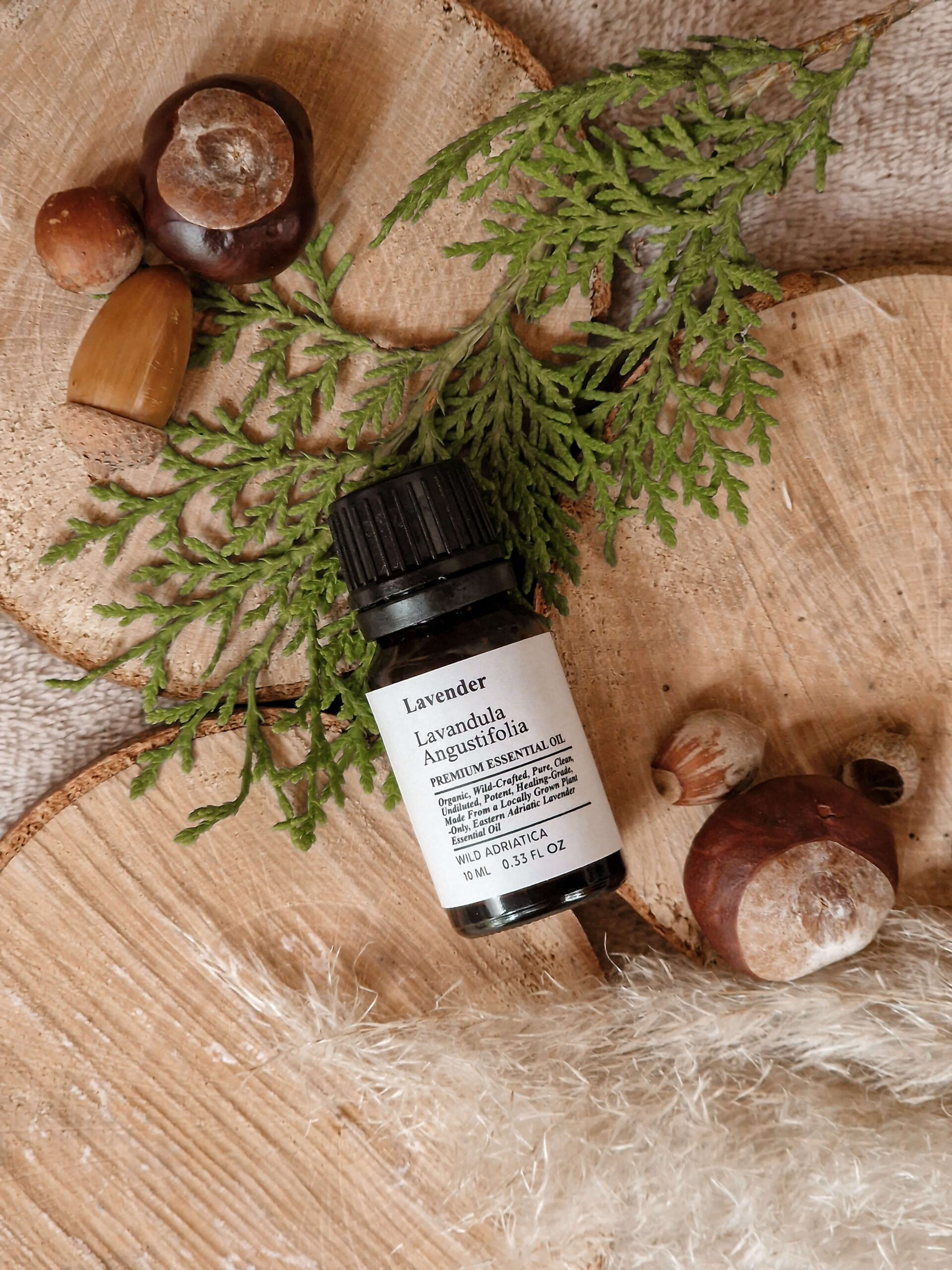
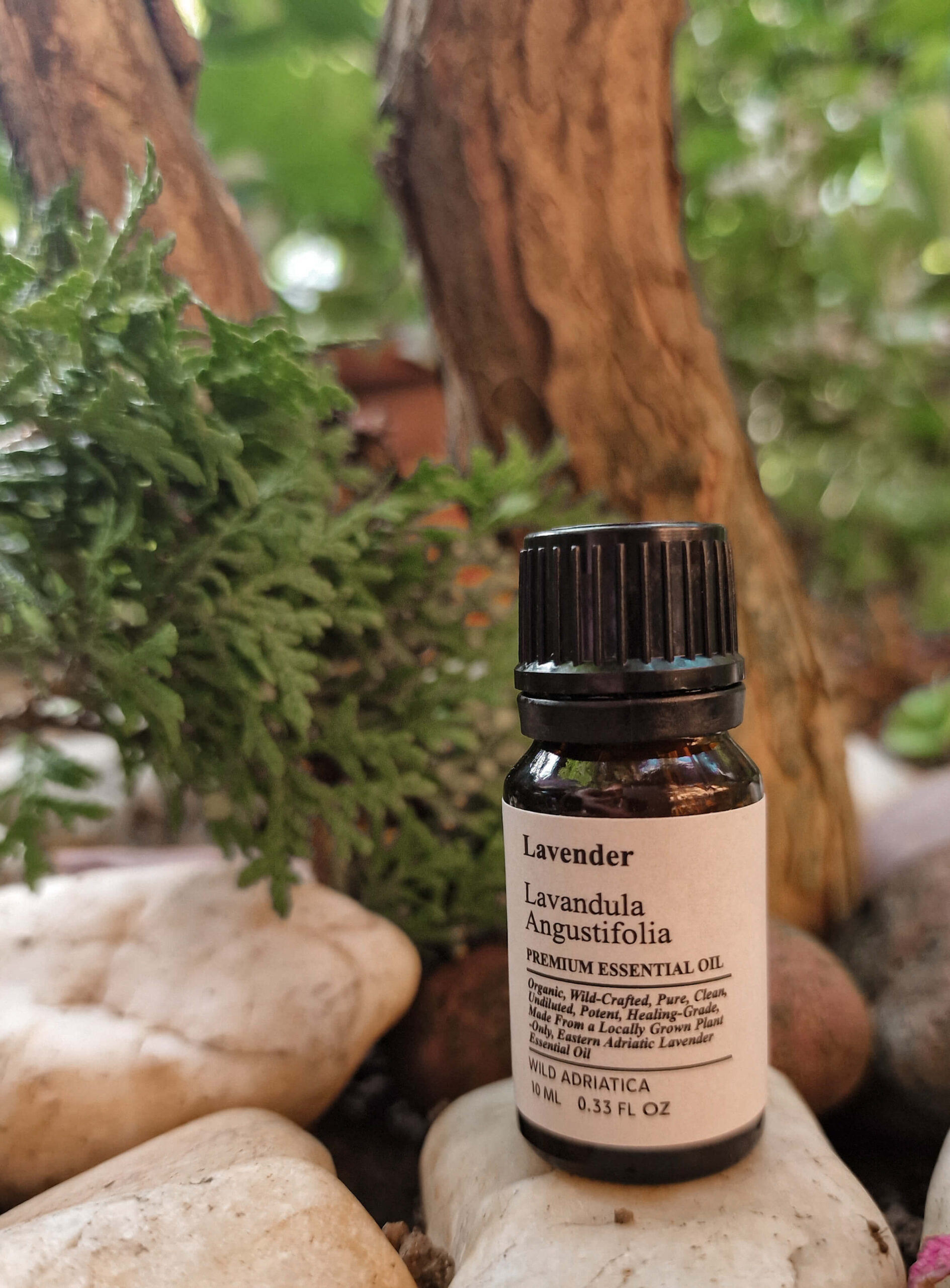
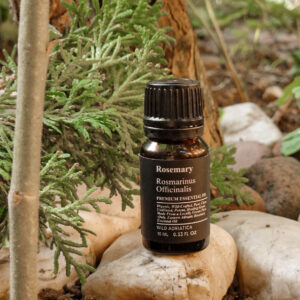
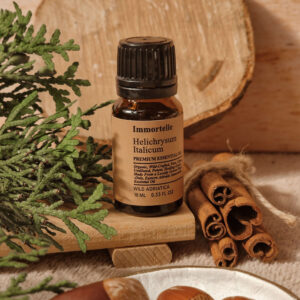
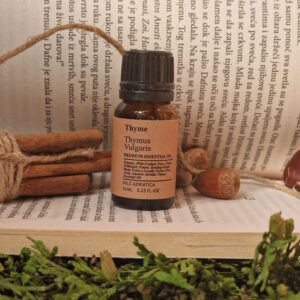
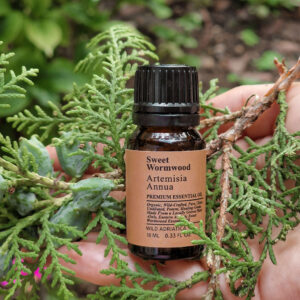
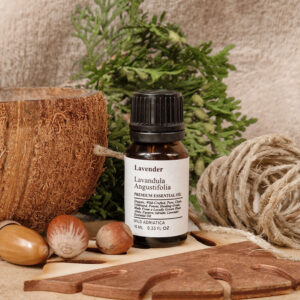
Reviews
There are no reviews yet.